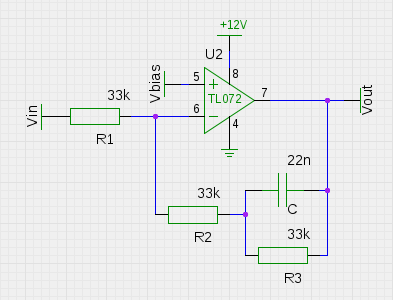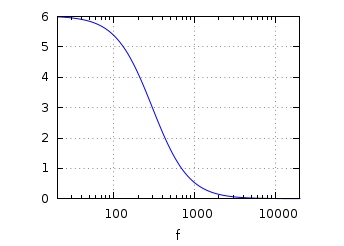-
Notifications
You must be signed in to change notification settings - Fork 1
Shelving low pass
The shelving low pass is an active filter to increase low frequency power in a signal. High frequency components are left unchanged. Shelving means that the low frequency gain is capped to a maximum value. The response of the transition region is defined by the filter implementation.
The simplest type of filter has just two parameters:
- Shelf gain G
- Transition frequency f
The basic circuit for this type of filter is shown below.

A continuous time model was derived and parameters were identified. Electrical component values can be calculated using the following formulae:
- R2 = R1
- R3 = R1 * (G - 1)
- C =

A value for R1 has to be chosen. For the usual OPs a value of 4k7 is a good choice. In the circuit above a value of 33k was chosen to achieve optimum response with standard cap and resistor values.
Discrete time was achieved by the using the matched transformation. The resulting first order filter can be run with a direct form I implementation.
The graph below displays the transfer function of the circuit above. It is tuned for f=300Hz and G=2 (=6dB).
